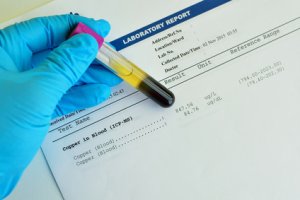Copper is a key ingredient in fat metabolism
 For the first time ever scientists from California have discovered copper's role in the burning of fat. This improves the nutrient's reputation as an essential nutrient.
For the first time ever scientists from California have discovered copper's role in the burning of fat. This improves the nutrient's reputation as an essential nutrient.
Copper is primarily known as an ingredient in kitchen utensils, electronic components, water pipes, wires, and other objects. However, in the last decades, science has become increasingly interested in this mineral because of its role in human metabolism and health. It is commonly known that copper plays a role in the red blood cells, connective tissue, pigmentation, and the nervous system. Now, a new study published in Nature Chemical Biology shows, for the very first time, that copper has a role in our fat metabolism. It is, however, important that we get the exact right amount, not more or less.
Copper helps the breakdown and burning of fat cells
The study was headed by Chris Chang, Professor of chemistry at the Berkeley Lab's Chemical Sciences Division in California. He and his team of researchers found that copper functions as a regulator in the breakdown of fat cells so they can be used for energy. The more copper a human contains, the more fat gets broken down. Therefore, the scientists assumed that it would be relevant to take a closer look at this phenomenon to see if a copper deficiency could in any way influence the increasing rate of obesity and obesity-related diseases.
Copper deficiencies are widespread, but supplements are not recommended
There is a lot of copper in oysters and other types of shellfish, liver, meat, beans, vegetables, and nuts. However, it turns out that 25% of the American population does not get enough copper because people eat to little vegetables and organ meat. In comparison, there is a lot more copper in Asian diets. Still, Chang does not recommend taking copper supplements, as too much copper may lead to serious imbalances in relation to zinc and other essential nutrients. It is therefore best to get copper from the diet, as this ensures the proper balance between copper and other minerals.
Did you know that copper should be in balance with zinc?
How copper boosts your fat burning
Chang and his team of researchers discovered the link between copper and fat metabolism by studying mice with a genetic mutation that causes copper to accumulate in the liver. This inherited disease, which is also seen in humans, is called Wilson's disease and is life-threatening if left untreated. Nonetheless, their analyses revealed that mice with Wilson's disease not only had too much copper in their liver, they also had lower levels of copper in their white fat tissue and correspondingly larger levels fat depots compared with healthy control mice.
By treating mice affected by Wilson's disease and by measuring levels of copper in their fat tissue, the researchers managed to discover how copper binds to the enzyme PDE3 (phosphodiesterase). PDE3 then attaches to cAMP, a chemical messenger in the body that is involved in numerous processes - including energy production from the breakdown of fat (also called lipolysis).
Farmers know about the phenomenon
The link between copper and fat metabolism is already known from farming where livestock farmers have observed that the copper levels in animal feed have a determining influence on the fat percentage in meat. However, the underlying biochemical processes have not been identified until recently.
Copper in the brain
We also have copper in our brains. Earlier research, which was also headed by Chang, shows that copper helps brain cells communicate by serving as a brake to help signals stop in the neural network when this is needed.
Although Chang's original interest in copper's importance for human health has focused on neural communication, his studies have now extended to copper's influence on fat metabolism. His most recent study was primarily financed by National Institutes of Health.
References:
DOE/Lawrence Berkeley National Laboratory. Copper is key in burning fat. ScienceDaily 2016
https://www.sciencedaily.com/releases/2016/06/160606200439.htm
Search for more information...
- Created on .








